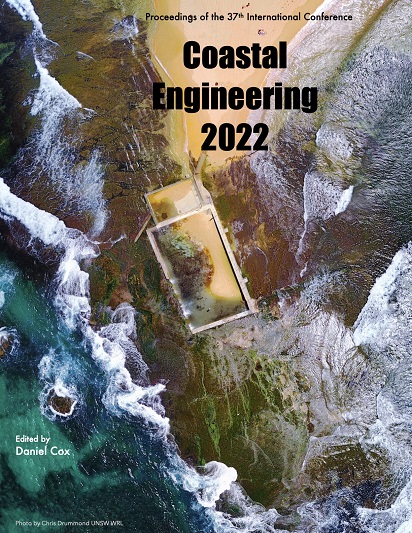Abstract
In the tsunami generated by the 2011 Great East Japan Earthquake, black tsunamis were identified in many locations. According to Kise and Arikawa (2020), in the areas where samples were obtained, the seawater was found to be mixed with silt components by about 10 percent. They also reported that a large impulsive wave pressure might be generated when the silt-mixed seawater acted on a vertical wall as a bore. Although there have been many studies on the mechanism of impulsive wave pressure in bore-shaped tsunamis (e.g., Co and Yeh, 2018), the effects of sand and silt mixing have rarely been investigated. Therefore, in this research, bore-shaped tsunami pressure experiments with sand and silt in various states of density were conducted to clarify the mechanism of impulsive pressure on a vertical wall and to verify the effect of density on impulsive pressures.References
K. Kise and T. Arikawa(2020): Experimental Study On The Influence Of Suspended Silt And Sand On Tsunami Force, Journal of JSCE, Ser. B2, Volume 76, Pages I_385-I_390.
H. Ko and H. Yeh(2018): On the splash-up of tsunami bore impact, Coastal Engineering, vol.131, pp 1-11
H. Matsutomi and F. Konno(2018): Density Of Tsunami Inundation Water And Its Influence On The Tsunami Run- Up And Deposit, ICCE No.36

This work is licensed under a Creative Commons Attribution 4.0 International License.
Copyright (c) 2023 Taro Arikawa, Naoki Taniguchi, Riku Takakura, Yota Enomoto, Hideo Matsutomi

